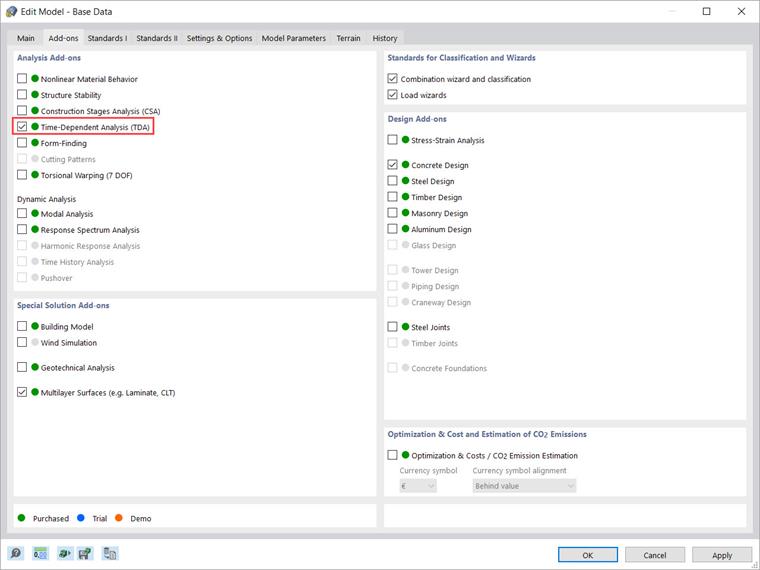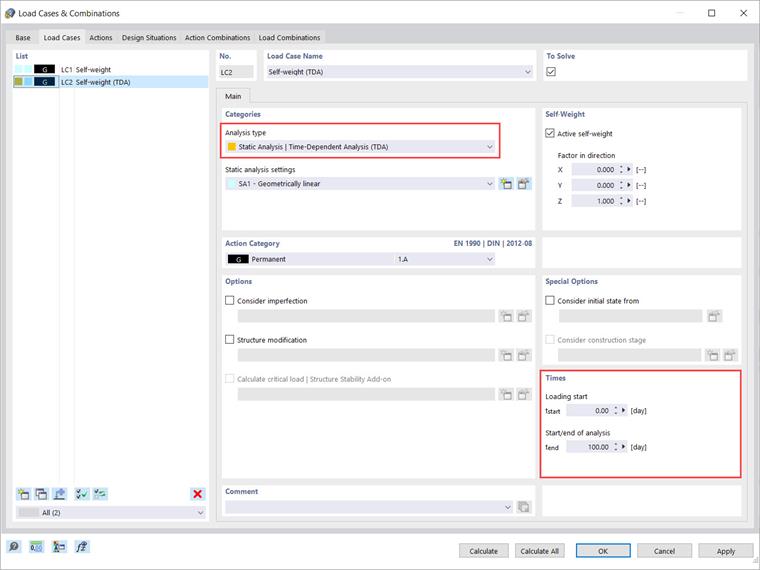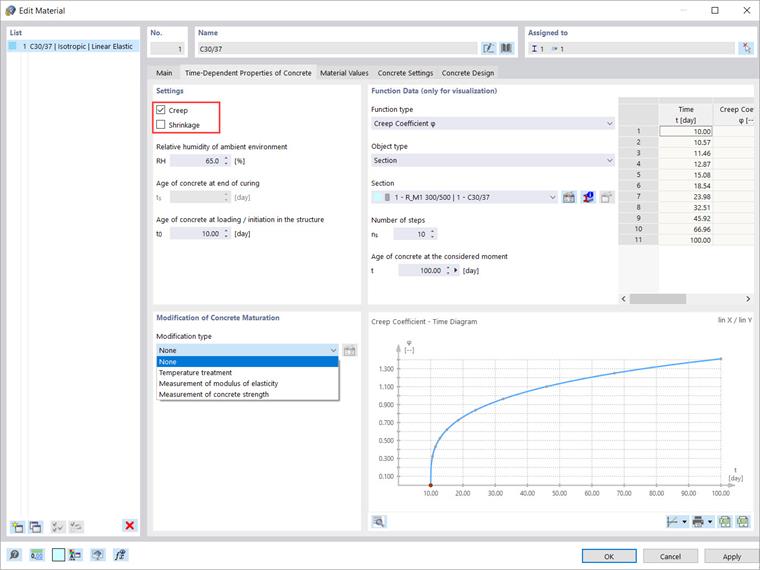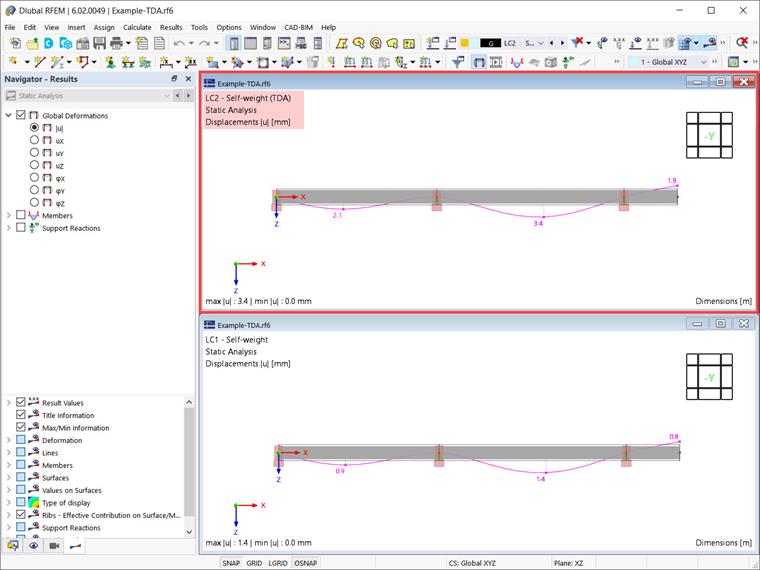Although many believe that the engineer’s job is done with the construction of the building, this is not entirely true. The structural engineer should always consider that time has an impact on the construction project even when it is completed.
Therefore, the long-term behavior of the materials must be taken into account in the analysis. This is important because long-term effects such as creep, shrinkage, and aging can affect the distribution of internal forces. Such influence can be taken into account by carrying out a time-dependent analysis (TDA).
In both RFEM 6 and RSTAB 9 it is possible to consider the time-dependent factors using the "Time-Dependent Analysis (TDA)" add-on. Once purchased, you can activate this add-on in the Base Data as shown in Image 1.
After activating the add-on, the following dialog boxes are extended with options relevant for the time-dependent analysis: “Materials” in the “Basic Objects” category, and “Load Cases” and “Load Combinations” in the “Load Cases and Combinations”. The former is expanded to include specific properties and define the time-dependent characteristics of the material.
Please note that this currently only applies to concrete, but the add-on is under development and will include other suitable materials in the future. For the last two (“Load Cases” and “Load Combinations”), the analysis types are expended to include the “Time-dependent analysis (TDA)” analysis type.
Both are detailed in the next sub-chapters of this article.
Load Cases and Combinations
You can perform time-dependent verifications for load cases that have been assigned to the “Time-Dependent Analysis” analysis type. You can assign this analysis type and define the time-related parameters in the “Load Cases” and “Load Combinations” tabs of the “Load Cases and Combinations” dialog box.
If the “Time-Dependent Analysis (TDA)” add-on is activated in the Base Data, “Static Analysis | Time-dependent analysis (TDA)” appears in the list of analysis types to choose from (Image 2). You can therefore associate this type of analysis with load cases and combinations for which you want to perform the time-dependent study. As shown in Image 2, you can add time information to these load cases, such as the start and end of the load.
Please note that you can customize the TDA settings in the “Edit Static Analysis Settings” window (Image 3). You can specify the number of increments for the time-dependent analysis and define the time distribution. Currently only a "linear" distribution is available, but other time distribution types such as logarithmic division are under development.
In the “Main” tab of the same window (Image 4), you can also save the result of each load increment.
The program then enables the modeling of creep effects, as explained in the following subchapter. The calculation is carried out nonlinearly according to the rheological model (generalized Kelvin model).
Time-Dependent Material Properties
In addition to the list of analysis types in the “Load Cases and Combinations”, activation of the TDA add-on also expends the options in the “Material” dialog box so that specific properties can be taken into account. For suitable materials (currently only concrete), the additional tab shown in Image 5 is available to you to define the material properties relevant for the time-dependent analysis.
Thus, in the “Time-Dependent Properties of Concrete” tab you can specify which time-dependent effects are to be applied. Both “Creep” and “Shrinkage” are available for selection. For example, if you tick the “Creep” check box to account for the time-dependent deformation of the material, you can then define the parameters that the program uses to determine the creep coefficient φ, and you can define the modification of concrete maturation.
In addition, you can define parameters used for the visualization of the “Creep Coefficient - Time Diagram” such as the number of steps and the age of the concrete at the time under consideration.
Results
After the calculation, you can display the end-time deformations for each load case as shown in Image 6. These results are also documented for you in the printout report of RFEM 6 and RSTAB 9. You can select the report contents and extent specifically for the individual design checks.






